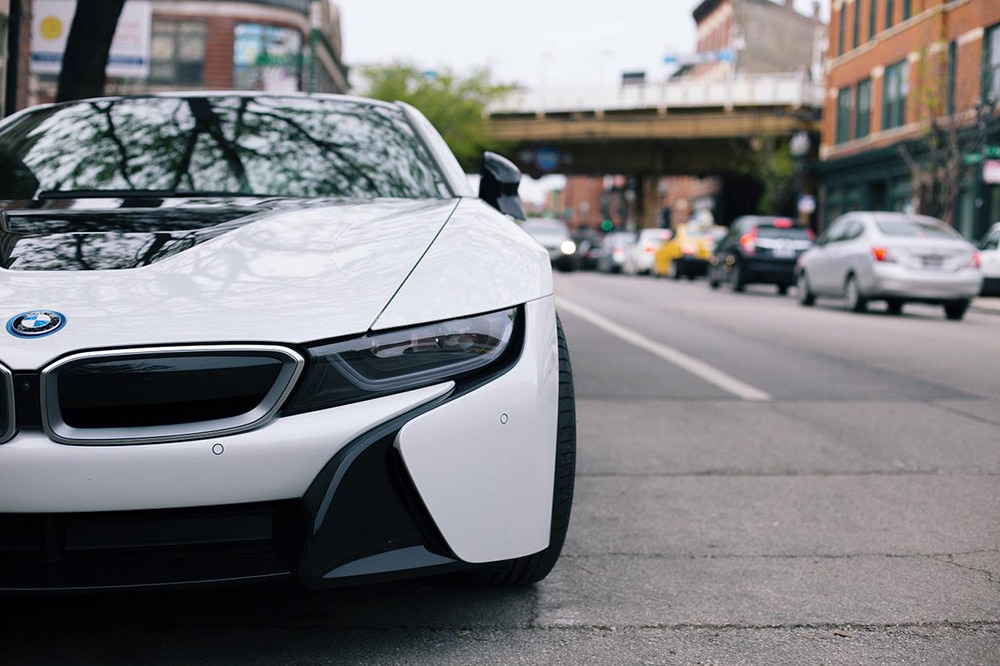Tips for Driving in Chicago Traffic
In an earlier article here on our blog, we addressed tips first-timers should follow in navigating Chicago’s roadways. In that article, we highlighted details about:
- Chicago’s grid system
- Illinois’ prohibition on the use of hand-held devices, such as navigation systems and cell phones
- The abundance of one-way streets in Chicago
- How important it is that you stay vigilant for pedestrians and bicyclists
- Why you must account for rush hour, construction zones, concerts, festivals, and sporting events when planning your commute
We even outlined alternative transportation options that you could utilize instead of driving in Chicago traffic yourself.
Many of these attributes that describe the Chicago driving experience could similarly be used in describing ones in almost any major city in the U.S. Some areas are more congestion-prone at different times from others. Also, Chicago often experiences rapidly changing weather conditions—especially in the winter, when you can experience rain, snow, sleet and ice on the same day!
The above-referenced factors are just some of the many concerns that make operating a vehicle in Chicago unique. We’ll highlight some tips for driving in Chicago below.
What Are the Most Heavily Congested Areas Within Chicago?
A report published by the transportation analytics firm INRIX in the spring of 2021 chronicled how Chicago ranks as the third most congested city in the U.S. The “Windy City” was only surpassed by New York and Philadelphia in this regard.
The study’s researchers identified the inbound portion of Interstate 290/294, headed toward the Interstate 90/94 interchange, as the most heavily traveled. The researchers also identified the following Chicago roadways as being the busiest, and thus, the ones most likely to result in longer commutes:
Edens Expressway: The eastbound portion of this roadway, which heads in the direction of I-90/I-94, ranked as No. 15 among U.S. cities with the highest traffic congestion.
Eisenhower Expressway: Motorists who took this roadway eastbound in 2020 lost, on average, ten minutes per leg of their commute, an amount that adds up to 41 hours lost annually.
Other notably busy portions of interstates in the Chicagoland area include:
- I-80 between US41 and IL83
- Northern portions of I-90/I-94 between Claybourne Street up to West Division Street
- The stretch of I-294 between O’Hare Way through Irving Park Road
- I-90/I-94 between the Dan Ryan Expressway/Chicago Skyway area (exit 59C) up through the exit 55A (Pershing Road)
- The stretch of I-290 that covers South Pulaski Road up to South Sacramento Boulevard
Interstates, sadly, aren’t the only busy roadways here in Chicago, though. Some of the most heavily trafficked streets include portions of:
- East Congress Parkway
- North McCormick Boulevard
- IL390
- US53
- North Lakeshore Drive (also known as US41)
The researchers working on the INRIX study didn’t necessarily assume that a roadway was dangerous just because it was heavily congested.
What Are the Most Accident-Prone Roadways in Chicago?
INRIX also gathered assigned rankings and compiled a list of the most dangerous Chicago roadways. The top seven ones that made it on the list included the following (in rank order):
- I-294
- I-94
- I-55
- I-355
- I-57
- I-80
- I-90
If this data is any indicator, Chicago interstates certainly appear to be far more dangerous than city streets for area motorists.
How To Stay Safe in Chicago Traffic
While you can’t control other motorists’ behaviors while out on the road, there are some tips you can employ to enhance your safety, including:
Maintain your vehicle in good working order. Motorists tend to put off getting their cars fixed when they start to show signs of wear-and-tear. Many vehicle owners delay topping off their gas, and virtually never top off their fluids or ensure that their tires are properly inflated. These oversights can result in equipment failures, breakdowns, and other safety concerns that can cause crashes. They can also leave you broken down on the side of a road and in a position where your safety is at risk.
Learn traffic rules before taking to the road. There are a few driving rules that you must abide by here in Chicago. One of them is that there are many stop lights that do not permit turning on red. Be vigilant in looking for signs that say you can or can’t turn on red. Also, know that pedestrians generally always have the right-of-way, especially when walking within marked crosswalks. Illinois law requires motorists to slow down, move over, or stop when approaching road construction or an emergency vehicle. It’s also illegal for motorists to try to pass another car within 100 feet of a railroad crossing, work zone, intersection, or school.
Be mindful of your speed. The speed limits posted are what you’re supposed to follow under optimal driving conditions. There may be specially-enforced speed limits on interstates where there’s road construction or near a park or school where children are apt to congregate. Traffic officials may also institute speed zones along stretches of the roadway that are particularly windy or narrow, where roads are in disrepair, or where there’s been an uptick in crashes. There’s a reason the speed limits are lower in these areas. It’s for your safety. Look out for the posted signs limiting or reducing the speed in these areas and respect them.
Know safe driving tips for different weather conditions. A clear, sunny day can quickly turn into a windy, rainy, snowy, or icy one. Prepare yourself for sudden shifts to occur during a single day. All of these weather phenomena can impact your ability to control your vehicle. Weather can affect how quickly your car comes to a complete stop after you apply your brakes. It’s always best to take things slow when inclement weather creeps up. You may also want to pull over and wait for the rain or whiteout conditions to subside or drive with your hazard lights on under such conditions. If things are particularly unsafe, you may need to wait for road crews to plow the snow or treat the icy conditions before continuing onward.
Filing an Illinois Auto Accident Claim
There are more than 2 million residents that reside in the Chicagoland area. Countless visitors also travel to Chicago and surrounding areas each year. While native Chicagoans may be familiar with safely navigating the city and have a decent command of Illinois driving laws, others may not. There are a lot of tourists and visitors that Chicago hosts on a daily basis. Lack of knowledge or lack of familiarity of an area can increase the chances of a crash occurring.
Know that Illinois is an at-fault insurance state, meaning that you can hold a negligent driver who unsuspectingly struck you liable for any injuries that they inflict upon you. Our attorneys at Krzak Rundio Gorman, Injury Attorneys know all about the dangers associated with driving in Chicago traffic. Let us advocate for you when you need support in holding liable parties accountable the most. If you have been injured in an accident due to someone else’s negligent operation of a car, truck, bus, motorcycle or other automobile, call us for a free, no obligation consultation.











